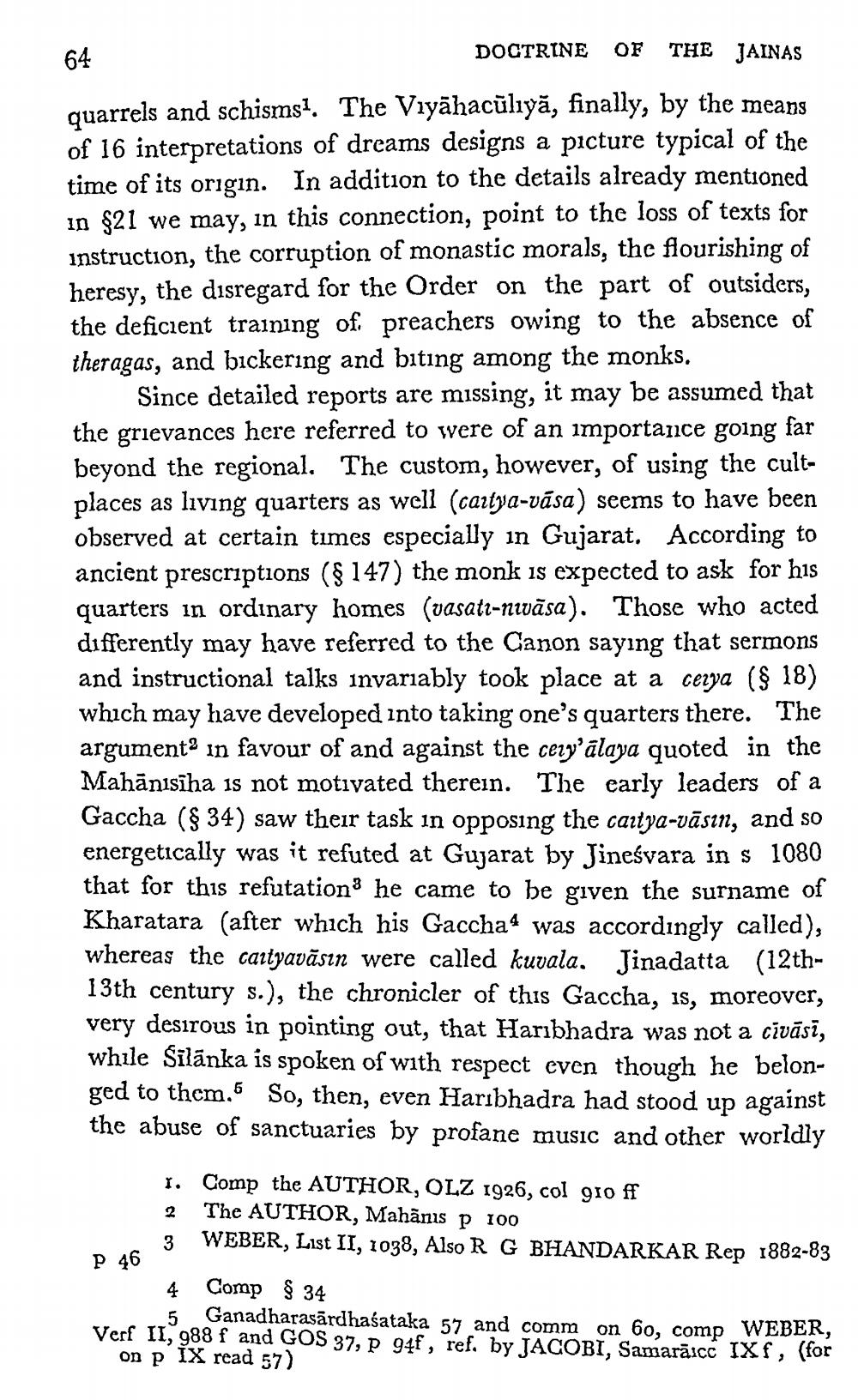________________
DOCTRINE OF THE JAINAS quarrels and schisms. The Viyāhacūlıyā, finally, by the means of 16 interpretations of dreams designs a picture typical of the time of its origin. In addition to the details already mentioned in $21 we may, in this connection, point to the loss of texts for instruction, the corruption of monastic morals, the flourishing of heresy, the disregard for the Order on the part of outsiders, the deficient training of preachers owing to the absence of theragas, and bickering and biting among the monks.
Since detailed reports are missing, it may be assumed that the grievances here referred to were of an importajice going far beyond the regional. The custom, however, of using the cultplaces as living quarters as well (cartya-vása) seems to have been observed at certain times especially in Gujarat. According to ancient prescriptions (8 147) the monk is expected to ask for his quarters in ordinary homes (vasatz-nwāsa). Those who acted differently may have referred to the Canon saying that sermons and instructional talks invariably took place at a cezya ($ 18) which may have developed into taking one's quarters there. The argumenta in favour of and against the cery'ālaya quoted in the Mahānisīha is not motivated therein. The early leaders of a Gaccha ($ 34) saw their task in opposing the cartya-vāsın, and so energetically was it refuted at Gujarat by Jineśvara in s 1080 that for this refutations he came to be given the surname of Kharatara (after which his Gaccha4 was accordingly called), whereas the caityavāsın were called kuvala. Jinadatta (12th13th century s.), the chronicler of this Gaccha, is, moreover, very desirous in pointing out, that Haribhadra was not a cīvāsi, while Sīlānka is spoken of with respect even though he belonged to them. So, then, even Harıbhadra had stood up against the abuse of sanctuaries by profane music and other worldly
1. Comp the AUTHOR, OLZ 1926, col 910 ff 2 The AUTHOR, Mahānis p 100
3 WEBER, List II, 1038, Also R G BHANDARKAR Rep 1882-83 P 46
4 Comp § 34
5 Ganadharasārdhaśataka 57 and comm on 6o, comp WEBER, Verf 11, 988 f and GOS 37, P 94f, ref, by JACOBI, Samarāicc IXf, (for
on p IX read 57)




